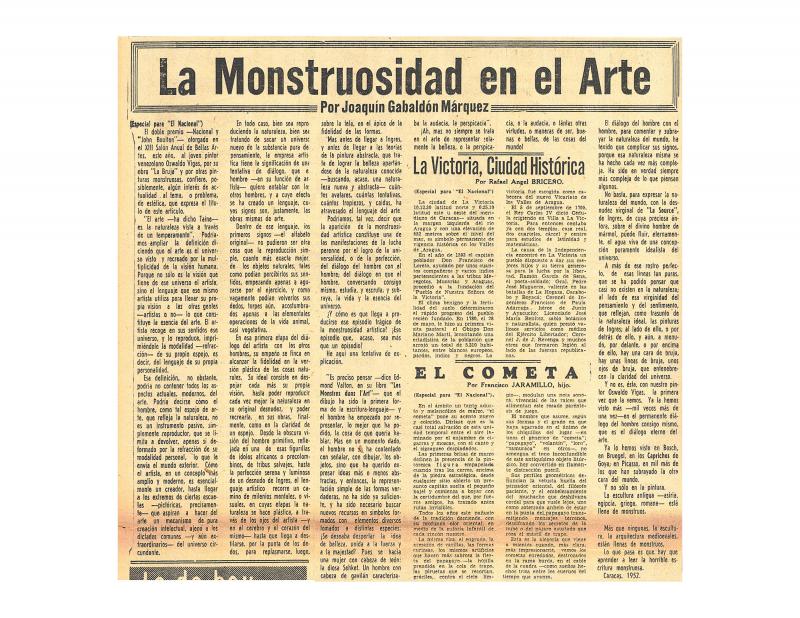To Marta Traba (1930–1983), the Argentinean art critic based in Colombia, the paintings of Oswaldo Vigas (b. 1926) are atypical of Venezuelan art. In her opinion, at the time, the art of Venezuela was linked both to technology and through trends such as Kinetic art. She believed that Vigas countered the work known as “official art” with the idea of “self-development.” This outlook was the foundation of an art practice guided by exploration, the return to perspectives already addressed and steering clear of phases, due to the artist’s own formal and creative requirements. This text was written in connection with a retrospective exhibition held at the Museo de Arte Contemporáneo in Bogotá (1973), which exhibited the art produced by the Venezuelan painter over thirty years. The curating process of this exhibition revealed Vigas’s attitude toward investigation and development and how he handled his own creative resources. All this is examined by the writer, who finds his approach in evident opposition to the innate spirit of rupture found in the avant-gardes. Beyond an analysis of his body of work, Traba summarizes Vigas’s work with her own hypotheses about the “deber ser,” that is, what Latin American art should be. In her opinion, while it must be contemporary, it would continue to be anchored in the artist’s own reality and would keep its distance from foreign influences. This set of assembled works stimulated the writer to question Latin America’s cultural dependence, setting forth the explicit possibility of a Latin American art whose deep local roots would be the source of its universality. To Traba, Vigas is the model of an “archaic man” whose convictions shore up the ideas of “time” and “place,” as opposed to the needs of the present and the universality sought by the movements prevailing at the time.
Taking a point of view somewhat contrary to Traba’s ideas, the Venezuelan curator and critic Roberto Guevara expresses his distrust of what he deems the “confusing promotion of ‘Latin American art’ ” and the decline already taking place in the continental application of the idea of “identity.” [See ICAA digital archive doc. no. 1152753)].
Regarding the work of Oswaldo Vigas, also see the texts by Juan Liscano, “La reiteración de Vigas” (doc. no. 1152769); Roberto Montero Castro, “Vigas en el ojo ajeno-Plástica e identidad latinoamericana” (doc. no. 1153266) and “Oswaldo Vigas: La lucha por descubrir la identidad americana” (doc. no. 1168108); Joaquin Gabaldón, “La monstruosidad en el arte” (doc. no. 850831); the articles by Lenelina Delgado, “De la pintura al tapiz” (doc. no. 1153365); and A. Feltra, “Vigas sufre de afán publicitario” (doc. no. 1155580).







